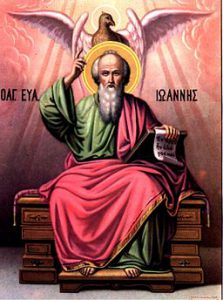 In addition to obedience to God’s commandments, Revelation 11 suggests two additional elements to the current priesthood of believers. Revelation 11:1 introduces a temple of God that John is told to measure. Interestingly, John is instructed to measure the worshipers in the temple along with the temple building. The measuring of the worshipers is without precedent in the Old Testament parallels. The measuring of the worshipers indicates that they enjoy the security of the measured area, that is, the temple of God. They are secure in God’s sanctuary. These worshipers are the people of God, who are already approaching God in his temple and worshipping him. Unfortunately, the people of God are also citizens of the “holy city” of Revelation 11:2. This city is being oppressed by the nations for 42 months, which refers to Revelation’s period of persecution that actually extends from the exaltation of Jesus (12:5) to his second coming (19:11-21). The paradox of Revelation 11:1-2 is that God’s people are both secure with God and vulnerable to persecution and death, because they are simultaneously worshipers in God’s temple and the people of his holy city. As worshipers in God’s temple, they are currently serving him as his priests. As his witnesses in the world, they are vulnerable to persecution and death (11:3-10). Their security is actually much more significant than their vulnerability. The worst that the Dragon and the Beast can do to them is take their lives (11:7). In truth, they are secure with God, whom they worship, as Revelation 11:11-12 will show.
In addition to obedience to God’s commandments, Revelation 11 suggests two additional elements to the current priesthood of believers. Revelation 11:1 introduces a temple of God that John is told to measure. Interestingly, John is instructed to measure the worshipers in the temple along with the temple building. The measuring of the worshipers is without precedent in the Old Testament parallels. The measuring of the worshipers indicates that they enjoy the security of the measured area, that is, the temple of God. They are secure in God’s sanctuary. These worshipers are the people of God, who are already approaching God in his temple and worshipping him. Unfortunately, the people of God are also citizens of the “holy city” of Revelation 11:2. This city is being oppressed by the nations for 42 months, which refers to Revelation’s period of persecution that actually extends from the exaltation of Jesus (12:5) to his second coming (19:11-21). The paradox of Revelation 11:1-2 is that God’s people are both secure with God and vulnerable to persecution and death, because they are simultaneously worshipers in God’s temple and the people of his holy city. As worshipers in God’s temple, they are currently serving him as his priests. As his witnesses in the world, they are vulnerable to persecution and death (11:3-10). Their security is actually much more significant than their vulnerability. The worst that the Dragon and the Beast can do to them is take their lives (11:7). In truth, they are secure with God, whom they worship, as Revelation 11:11-12 will show.
The witnesses of Revelation 11:3-12 may also have a priestly connection due to an allusion to Zechariah 4. In Revelation 11:4, the two witnesses are introduced as “the two olive trees and the two lampstands who stand before the Lord of the earth.” The two olive trees and two lampstands standing before the Lord is an allusion to Zechariah’s vision of a lampstand and two olive trees “who stand by the Lord of the whole earth” (Zech 4:11-14). In Zechariah’s vision, the two olive trees are God’s two special servants, the ruler from David’s line (Zerubbabel) and the high priest (Joshua). Zerubbabel will accomplish God’s work of building the temple by the power of the Spirit (4:6). In the temple, Joshua will perform his service to the Lord (3:7). In Revelation 11:4, the two olive trees are God’s servants, his witnesses, who are empowered by the Spirit to do his work. By describing them as “the two lampstands,” John connects them to the people of God, because the seven lampstands are the seven churches in John’s earlier vision (Rev 2:20). Revelation 11:4’s allusion to Zechariah 4 would appear to suggest a relationship between God’s witnesses and his two anointed servants, namely, the Davidic ruler and the high priest. The justification for this relationship could arise from Revelation’s presentation of the people of God. They are rulers, who will rule with God (5:10; 22:5) and his priests, who serve him (5:10; 22:3). If so, then, the witnesses of Revelation 11:3-10 are serving God as his priests by carrying out their work of prophesying and testifying to the nations (11:3, 7).
Sources:
These paragraphs represent an edited excerpt from an essay that I wrote and published:
Paul Hoskins, “Priesthood in the Book of Revelation.” Southern Baptist Journal of Theology 22 (2018): 101-17.
For further information about the verses referenced above, see Paul Hoskins, The Book of Revelation: A Theological and Exegetical Commentary.
